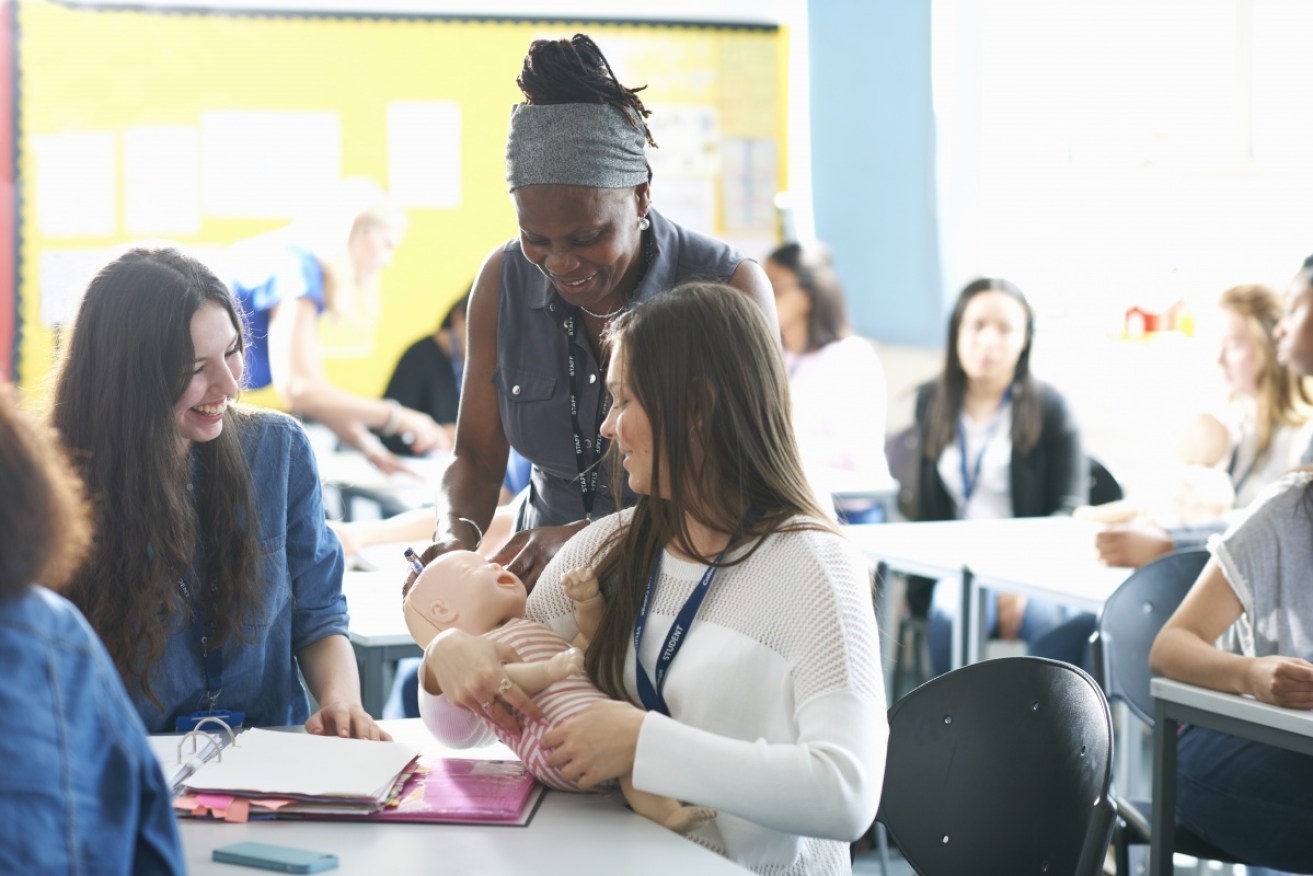Why baby doll kids are more likely to become teen parents


The practice of carrying around a fake baby everywhere you go may not discourage childbirth. Photo: Getty
Over the last 20 years, thousands of Australian teenagers took part in a much-hyped program caring for a life-sized baby doll that screams, demands rocking to sleep and food, and virtually fills a nappy.
The idea was to discourage these teens from becoming pregnant by giving them a dose of the never-ending maddening demands of motherhood.
But a new study suggests that up to one in six of those teens became pregnant by the time they turned 20. It also appears that girls who became pregnant after taking part in the Virtual Infant Parenting program were more likely to carry their babies to term than girls who received standard school sex education.
Lead researcher Sally Brinkman told The New Daily: “The idea of the study was to determine if the virtual parenting program did in fact delay teenage pregnancy. We thought it would… but it doesn’t. It appears to be encouraging it.’’
Beginning in 2003, researchers recruited West Australian school students aged between 13 and 15 and followed them up to age 20. Over three years, 2800 girls were recruited for the randomised controlled study.
Half of the teens received the baby simulator intervention – which consisted of caring for a homely doll for 60 hours over a weekend – and the other half were given the standard sex education.
The study was designed so the girls who cared for the baby dolls were kept separate from the control group to avoid emotional contamination. Of those who cared for a virtual baby, 17 per cent – or one in six – became pregnant by the age of 20, compared to 11 per cent of the control group girls.
“After controlling for effects such as socio-economic background, we found that girls who take part in the virtual parenting program have a 1.36 greater risk of falling pregnant before they leave their teens,’’ Ms Brinkman says, an Associate Professor with the School of Public Health at the University of Adelaide.

The study into time spent with fake babies produced interesting findings. Photo: Getty
The other surprising trend related to the rate of abortions between the two groups: 60 per cent in the control group, 54 per cent among those who cared for a virtual baby.
“We found a higher proportion of abortions in the group that didn’t have access to the virtual baby … while the group that took part in the program were more likely to go forward in carrying their babies to term,’’ says Ms Brinkman.
“It may be that the experience of caring for the virtual baby gave the girls more confidence to take on motherhood.’’
Ms Brinkman describes this result as “a trend’’ rather than being statistically significant. There were no follow-up interviews with the test subjects to determine why one group had more pregnancies than the other.
Rather, the teens were tracked via medical records.
Why does this happen?
So the question remains: how does spending 60 hours with a squawking rubbery android work on a teenage girl’s psyche to make her vulnerable, or even enthusiastic, to motherhood?
A clue might lie in the way the virtual parenting program is designed. The young mothers wear an electronic wristband that lets the babies know they are in close proximity – and will then respond in manner that signals a personal connection.
“The girls couldn’t just give the doll to someone else to look after,’’ says Ms Brinkman.
On the face of it, the science of cuteness suggests the interaction between the virtual babies and the teens is triggering a caring response in the brain.

Australia has high teen pregnancy rates. Photo: Getty
A 2009 study, ‘Baby Schema in Infant Faces Induces Cuteness Perception and Motivation for Caretaking in Adults’, published by the US journal Ethology, found that undergraduates exposed to photographs of babies – where the infant features of large round head and big eyes had been manipulated and exaggerated – were more motivated to take care of those babies.
For public health researchers like Ms Brinkman, the virtual baby failure to prevent teen pregnancies means “going back to the drawing board. We have lots of questions.’’
Australia, according to OECD rankings, has a higher than average rate of teen pregnancy and abortion.
“It’s proving not an easy problem to solve,’’ she says.








